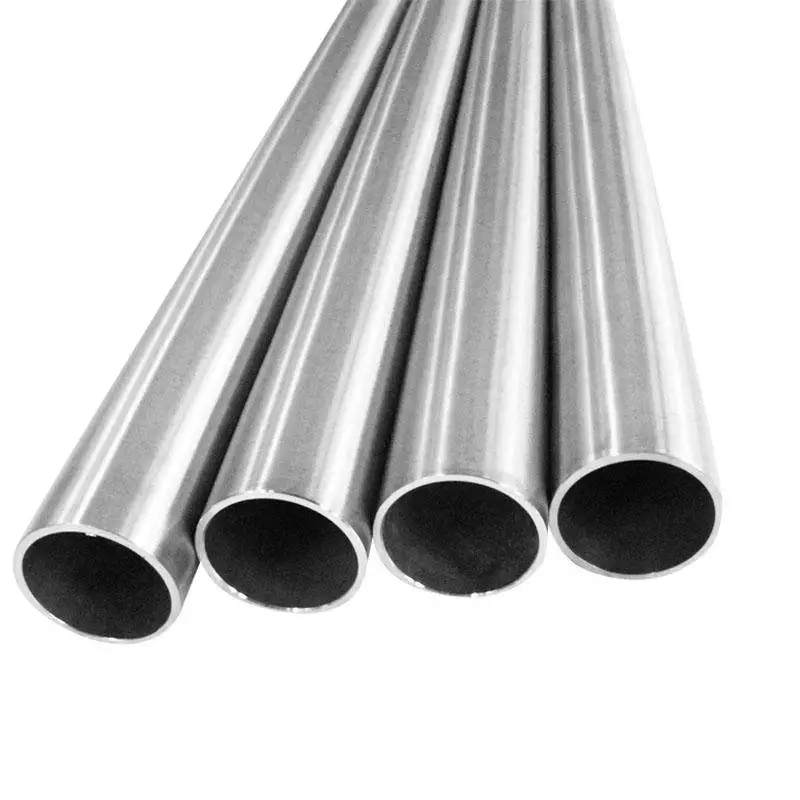
石油とガスの探査と生産という困難な世界では、極端な条件が例外ではなく標準であるため、材料の選択が成功と失敗の違いを生み出す可能性があります。この材料革命の最前線に立つのは、石油産業の縁の下の力持ちであるニッケル基合金パイプです。これらの優れた設計ソリューションは、腐食環境、高温、巨大な圧力が日常的な課題となっている業界において不可欠なものとなっています。
ニッケル基合金パイプの世界を深く掘り下げることで、ニッケル基合金パイプを不可欠なものにする独特の特性を明らかにし、石油およびガス分野にわたるその多様な用途を探求し、エンジニアや業界リーダーが一貫してこれらの高性能パイプに注目する理由を理解します。材料。海洋掘削の深さから製油所の複雑な作業に至るまで、ニッケル基合金パイプは、世界で最も貴重な資源の 1 つを抽出、輸送、加工する方法に静かに革命をもたらしています。
現代の石油とガスのインフラストラクチャのこれらの重要なコンポーネントの背後にある科学、工学、および実用的なアプリケーションを探索するこの旅に参加してください。あなたが知識を広げようとしている業界の専門家であっても、エネルギー依存の世界を動かす技術の驚異に興味のある好奇心旺盛な読者であっても、石油産業におけるニッケル基合金パイプに関するこの包括的なガイドは有益で啓発的なものになることを約束します。
- 導入
ニッケルベースの合金パイプは、石油およびガス産業で重要な役割を果たしています。これらの高性能材料は、過酷な条件下でも優れた特性を維持し、石油の抽出および輸送プロセスに不可欠なコンポーネントとなっています。石油産業で使用されるニッケル基合金パイプの特徴・用途・主な種類・選定の注意点などを詳しくご紹介します。 - ニッケル合金管の特徴
石油産業でニッケル合金パイプが広く使用されているのは、主にその優れた物理的および化学的特性によるものです。次の表は、ニッケル合金パイプの主な特性をまとめたものです。
| 特性 | 説明 | 英語用語 |
|---|---|---|
| 耐食性 | 酸、アルカリ、塩水腐食に対する優れた耐性 | 耐食性 |
| 高温性能 | 高温環境下でも強度と安定性を維持 | 高温性能 |
| 機械的強度 | 優れた引張強度と圧縮強度 | 機械的強度 |
| 溶接性 | 溶接性が良く、設置やメンテナンスが容易 | 溶接性 |
| 耐摩耗性 | 耐摩耗性と耐浸食性 | 耐摩耗性 |
| 低い熱膨張係数 | 温度変化時にも寸法安定性を維持します | 低熱膨張 |
- 石油産業での応用
ニッケル合金パイプは、石油産業において次のような幅広い用途に使用されます。
掘削装置:
- ドリルパイプ
- ケーシング
- チューブ
生産設備:
- クリスマスツリー
- 安全弁
- セパレーター
交通システム:
- 石油パイプライン
- 海底パイプライン
製油所の設備:
- 熱交換器
- リアクター
- 蒸留塔
- 主なニッケル合金の種類
石油産業で一般的に使用されるニッケル合金パイプにはさまざまな種類があり、それぞれに特定の特性と用途があります。次の表は、主要なニッケル合金の種類とその特性の一部を示しています。
| 合金名 | 主要コンポーネント | 特徴 | 主な用途 |
|---|---|---|---|
| インコネル625 | ニッケルクロムモニウム | 優れた耐食性、高強度 | 海洋石油プラットフォーム、化学処理装置 |
| インコロイ825 | Ni-Fe-Cr | 塩化物応力腐食割れに対する良好な耐性 | 酸性油井およびガス井、海水処理システム |
| ハステロイ C-276 | ニモクロム | さまざまな腐食環境に対する優れた耐性 | 高温高圧井戸、酸性ガス処理 |
| モネル400 | Ni-Cu | 優れた耐海水耐食性 | 海水冷却システム、淡水化装置 |
| アロイ20 | ニッケル-クロム-銅 | 硫酸腐食に対する良好な耐性 | 硫酸処理装置、リン酸製造 |
- 選択に関する考慮事項
石油用途に適切なニッケル合金パイプを選択する場合は、いくつかの要素を考慮する必要があります。
動作環境:
- 温度範囲
- 圧力条件
- 腐食性媒体
機械的特性の要件:
- 強さ
- 靭性
- 疲労性能
経済的要因:
- 初期費用
- ライフサイクルコスト
- メンテナンス要件
規制と基準:
- 業界標準
- 環境規制
- 安全要件
- 製造・加工
ニッケル合金パイプの製造と加工は、最終的な性能に大きな影響を与えます。主な製造方法には次のようなものがあります。
シームレスパイプの製造:
- 熱間押出
- 冷間引抜
溶接管の製造:
- 縦溶接
- スパイラル溶接
熱処理:
- アニーリング
- 溶体化処理
表面処理:
- 酸洗い
- 不動態化
- 品質管理と検査
ニッケル合金パイプが石油業界の厳しい要件を満たしていることを確認するには、包括的な品質管理と検査が必要です。
| 検査方法 | 目的 | 英語用語 |
|---|---|---|
| 超音波検査 | 内部欠陥の検出 | 超音波検査(UT) |
| 放射線検査 | 溶接品質をチェックする | 放射線検査 (RT) |
| 磁粉検査 | 表面および表面付近の欠陥を検出 | 磁粉検査 (MPI) |
| 化学組成分析 | 材料構成を確認する | 化学組成分析 |
| 機械的特性試験 | 強度と靭性を確認する | 機械的特性試験 |
| 耐食性試験 | 耐食性の評価 | 耐食性試験 |
- 結論
ニッケルベースの合金パイプは、その優れた性能により、石油およびガス産業で重要な役割を果たしています。これらの高性能材料を適切に選択し、正しく使用することで、機器の信頼性と寿命が大幅に向上し、メンテナンスコストが削減され、極限環境でも安全な操作が保証されます。石油抽出技術が進歩し続け、環境要件がますます厳しくなるにつれて、ニッケル合金パイプは業界で引き続き重要な役割を果たし、より革新的な合金の開発と応用につながる可能性があります。
